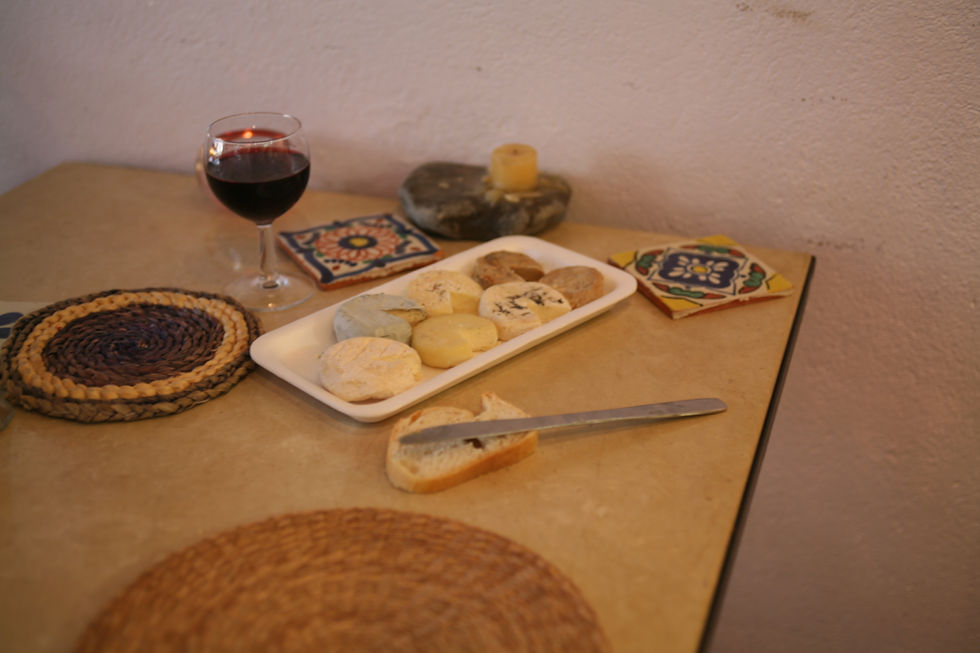(9) A FUEGA’L PITU, 1 name, 4 cheeses, same quality, same devotion to taste.
- C Demeyer
- Dec 4, 2021
- 3 min read
Updated: Jan 3, 2022
I had a surprise yesterday at home, a strange bird was sitting on a branch in the building's courtyard. I could not not think about a speciality from Spain when I saw it, I do not know why I made the correlation, the bird made me think of foreign lands and I pictured the mountains of Northern Spain.
So, I present to you a description of this fabulous cheese of Asturias, the A FUEGA’L PITU. You will find the address for its official site at the bottom, and you will find pictures of this particular product that has 4 different presentations. Each is well defined and each is specific, but all respect the same quality and is proof of its history. Enjoy.

Resting bird in south London
History
Known in the area since the eighteenth century it was used to pay taxes, as everywhere that cheese was made at the time in Europe at least, however, the production of the cheese has never been over abundant. The area became restricted to the present one as traditional producers regrouped to ask for a protection, otherwise the cheese was known locally with no specific geographical reference but always in this part of Spain. The name Afuega’l pitu literally means “choke the chiken” and diverse interpretations of the name persists to this day, one being my favourite and refers to the old way of making the cheese when people used to “strangle” the bag of curds for drainage, another one reference the difficulty of eating the cheese but this has nothing to do with any chicken!
Area of production
The Asturias area of Northern Spain benefit from an oceanic climate with mild winters and good rainfall with moderate sunshine, at least for Spain. The area of production is made up of 13 municipalities within the Principality of Asturias: Belmonte, Candamo, Cudillero, Grado, Las Regueras, Morcin, Muros del Nalon, Pravia, Riosa, Salas, Santo Adriano, Soto del Barco, and Tineo; this makes a continuous and homogenous area. The topography is rugged with high mountains to the south and east, with beautiful wild flora and cliffs on the shore, because of this the area was a refuge for Christians before the Reconquista and the source of the kingdom of Leon created south of it. All of this make this area rural and conducive to well-made local products, sometimes not so well-known outside of it.
Production method
Milk from Friesian or Asturian de los Valles breeds, in pastures during the day, is used pasteurised (raw is matured for 60 days) and slow coagulation ensue with a little rennet at 22 to 32oc for 15 to 20 hours. Moulding is done straight away and drainage follows for 12 hours, then salting is done on the surface and the cheese is put in smaller moulds and transferred to the maturing room; Trapu versions has its curds kneaded (having been drained for 24 hours), salting is done and paprika (1% max) added if “roxu”, and then moulded or put in gauze for final drainage of 24 hours, then maturing occurs, up to 60 days. This gives 4 different versions of the cheese: Atroncau Blancu, pyramidal white in colour, Atroncau Roxu, pyramidal and pinkish with paprika made, Trapu Blancu, pinched bag shaped white in colour, and Trapu Roxu, pinched bag shaped and pinkish in colour as made with paprika.
Description
This is a very interesting cheese with different presentations, of shape and colour. Slightly crumbly, the flavour has a touch of spiciness on a basic lactic note, this is very pleasant if rugged and is complemented by a hint of yeast, a somewhat mushroomy feel; it mellows very well when matured.
Safe keeping
To be consumed within the week when cut, wrap in foil or cling film and keep in refrigerator.
Statistics: 8 producers in 2016, 7 artisanal and 1 dairy.
http://www.doafuegalpitu.com



Comments